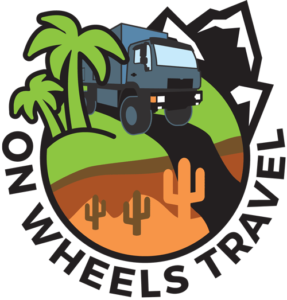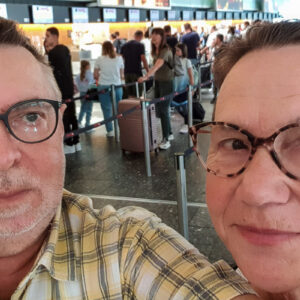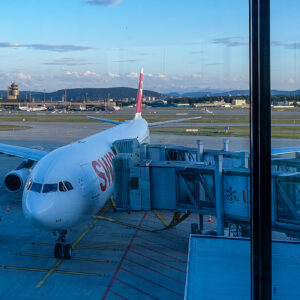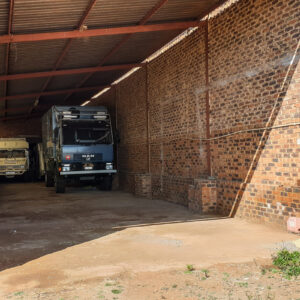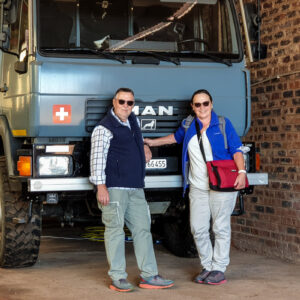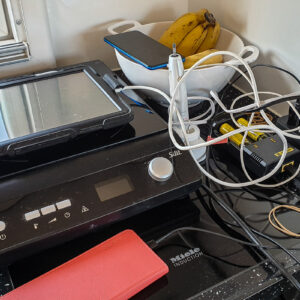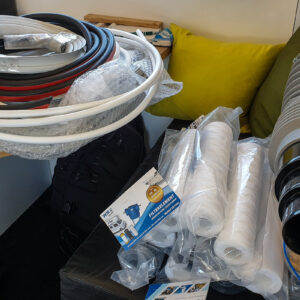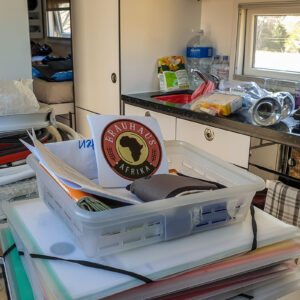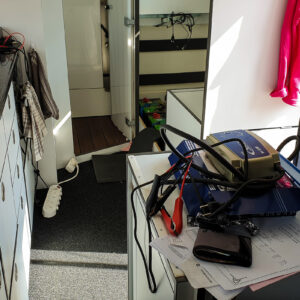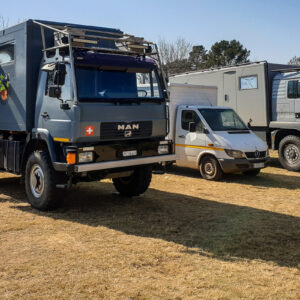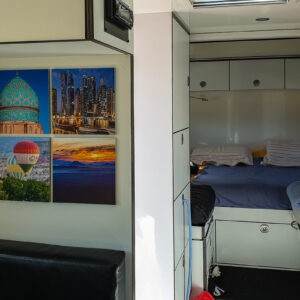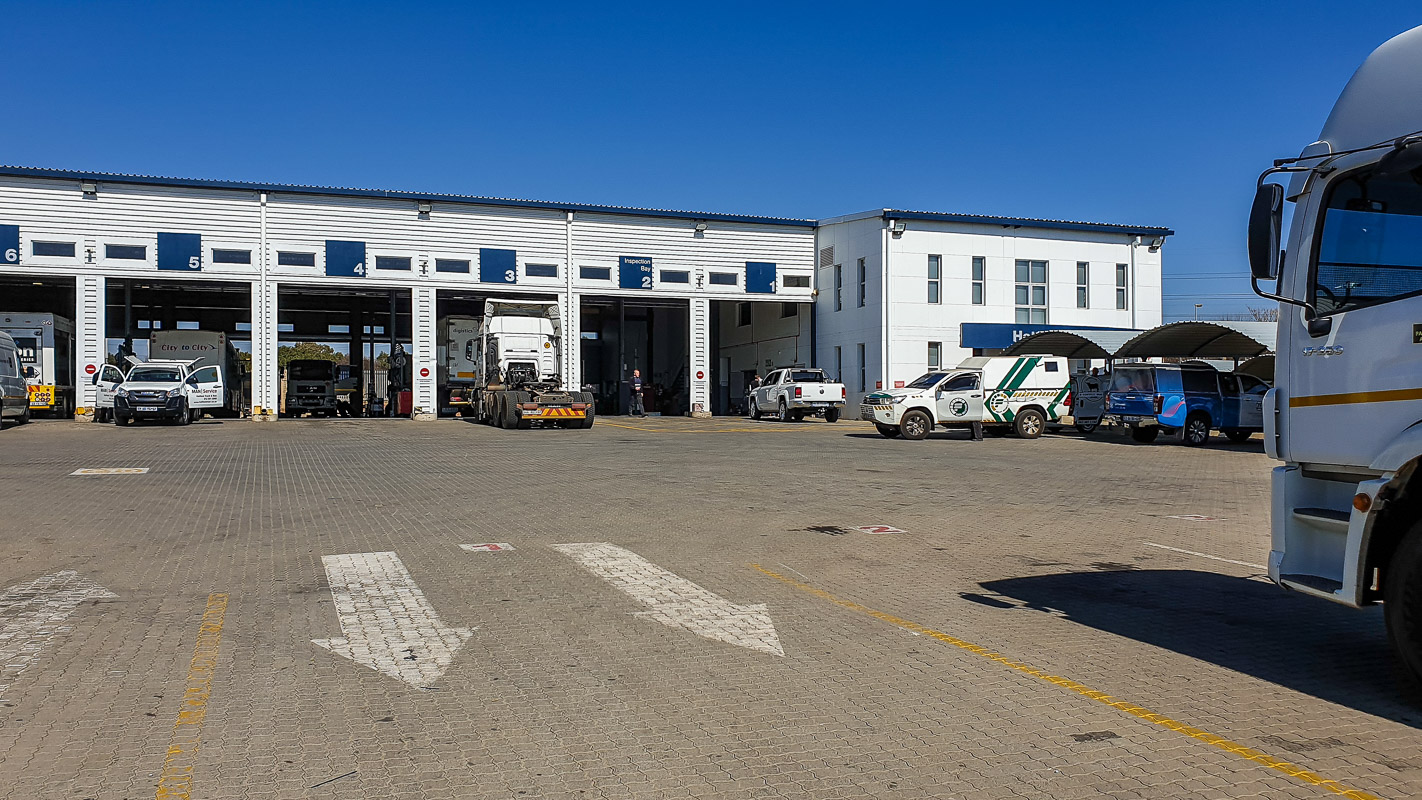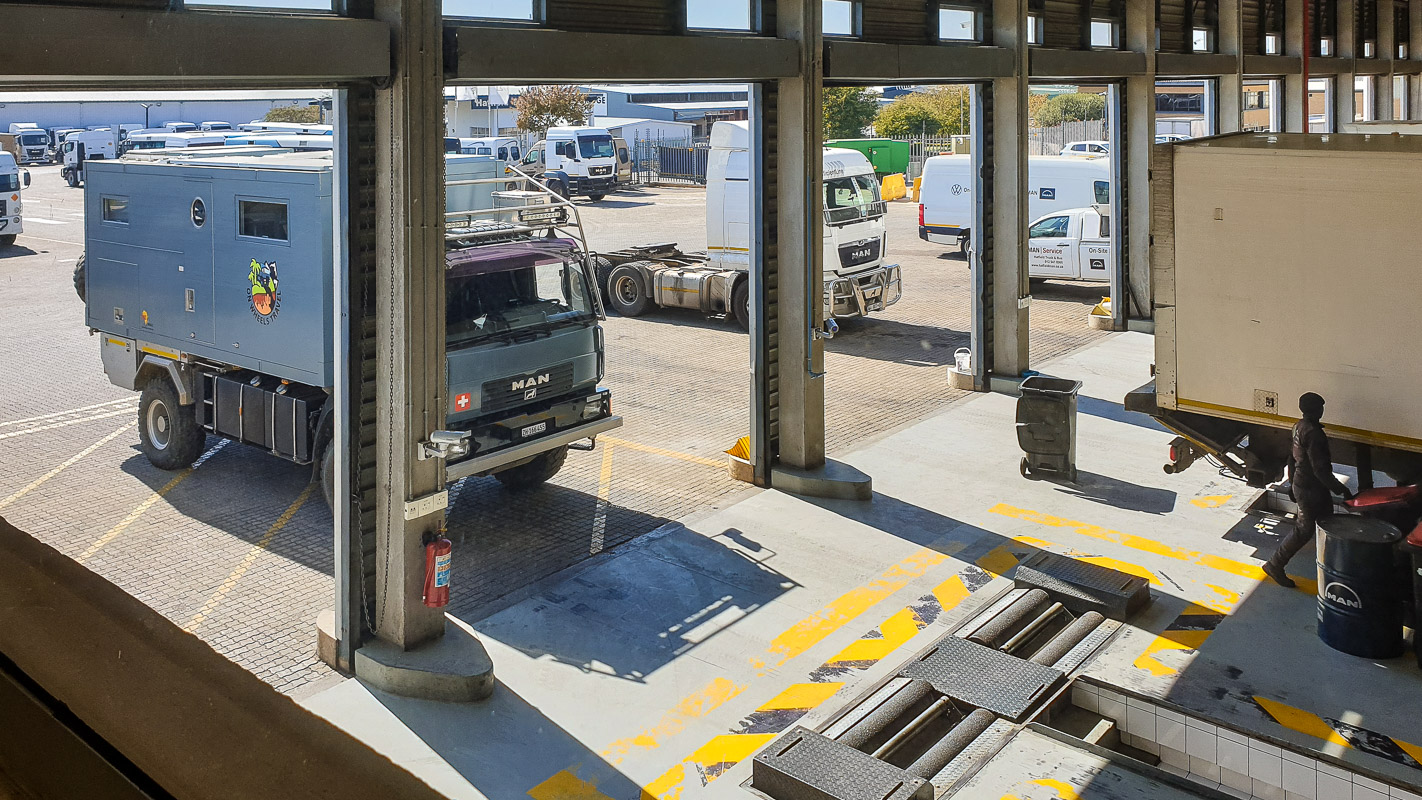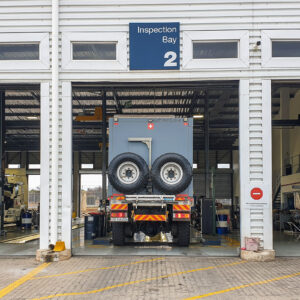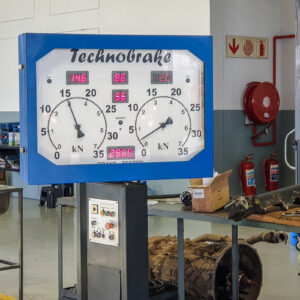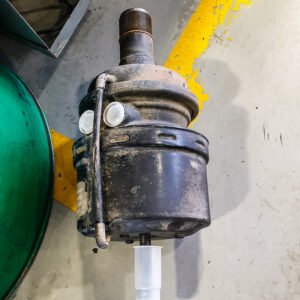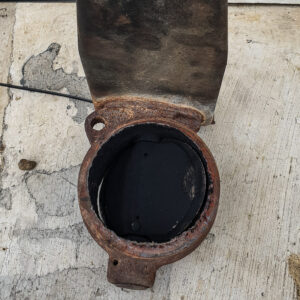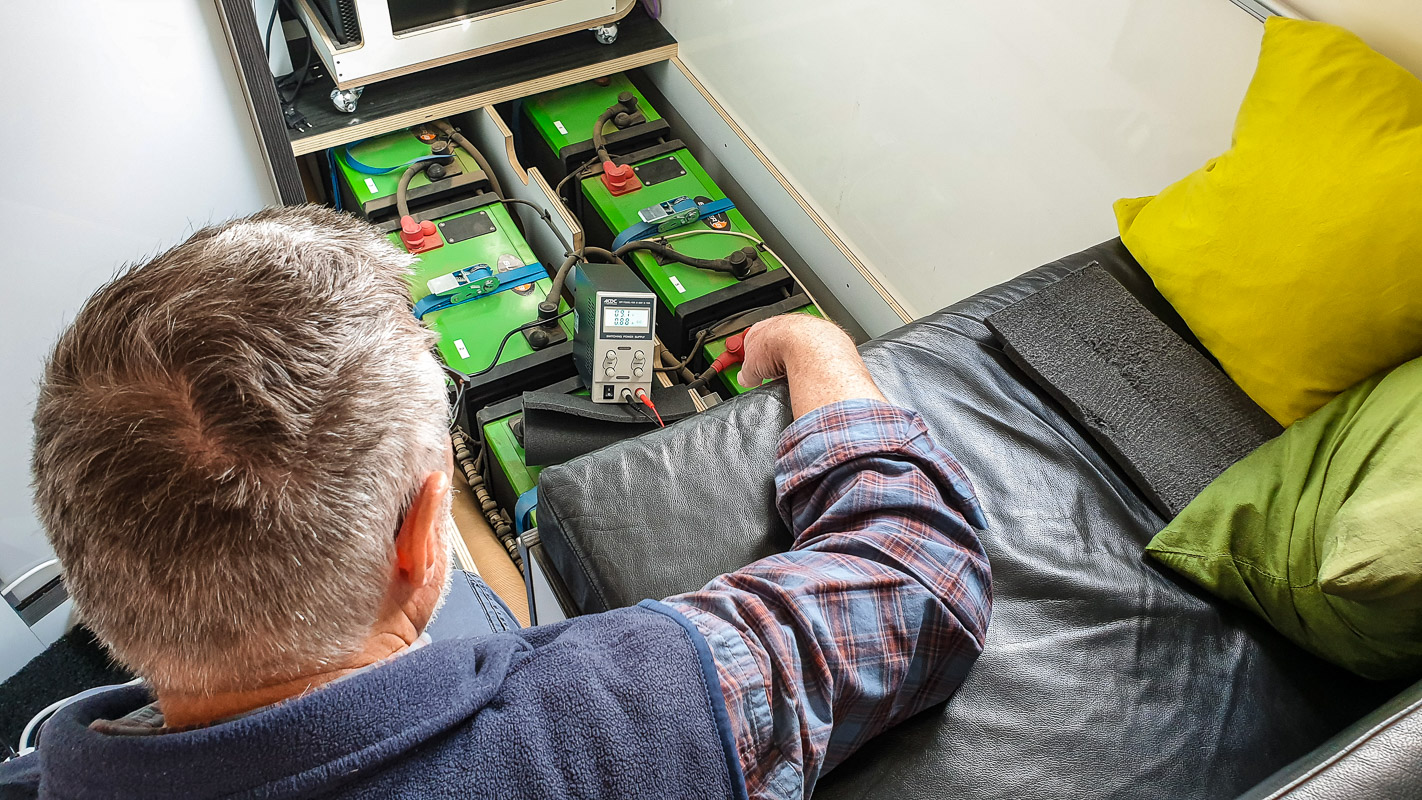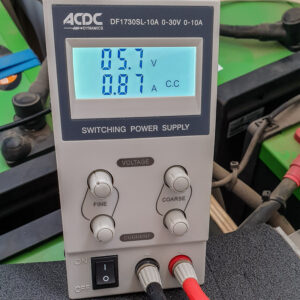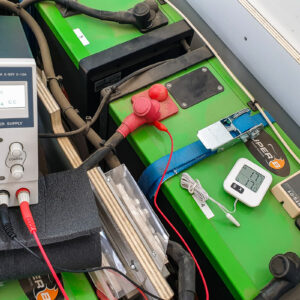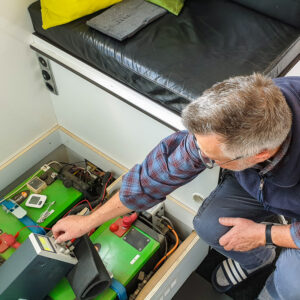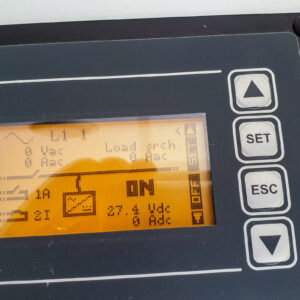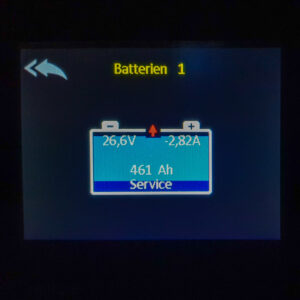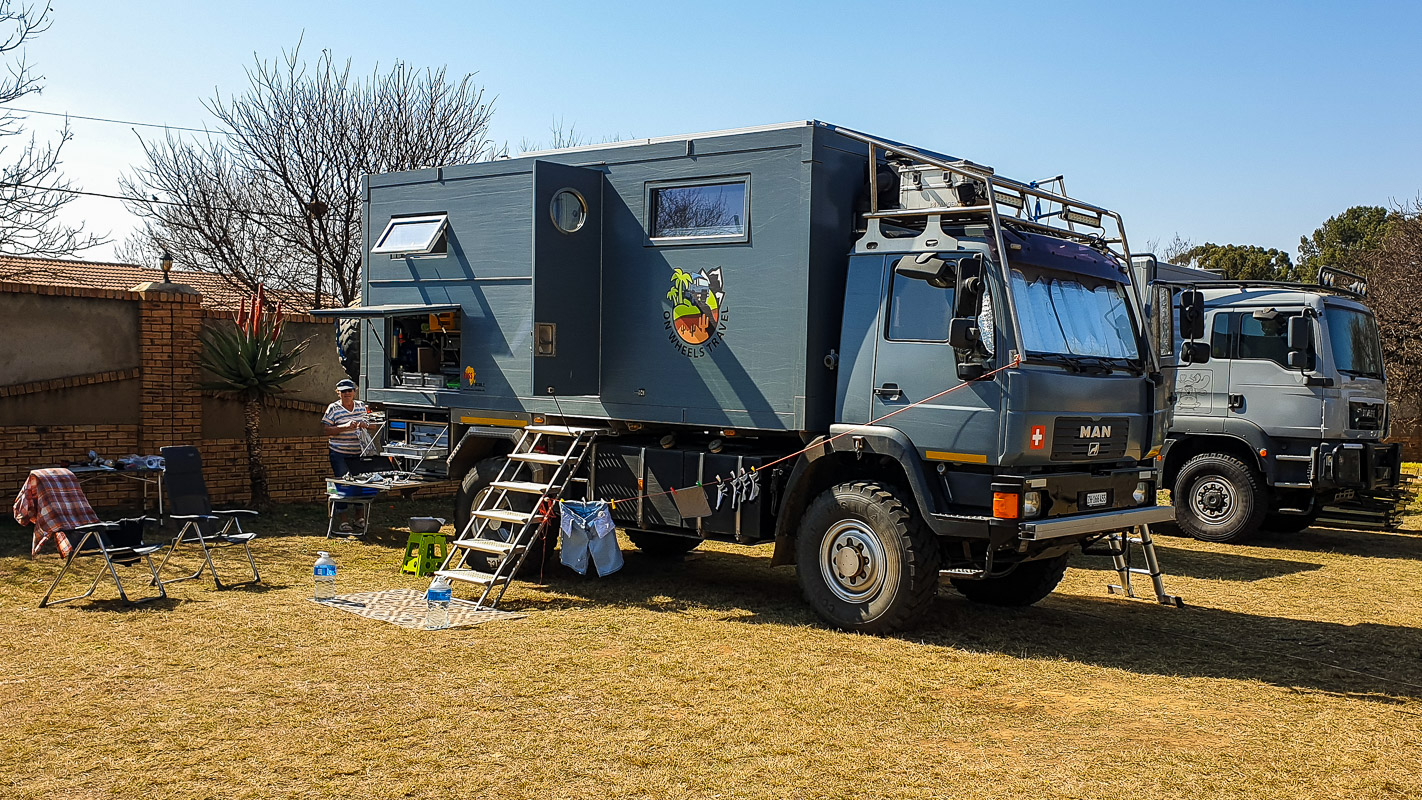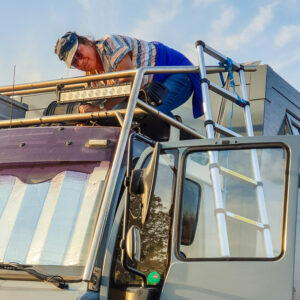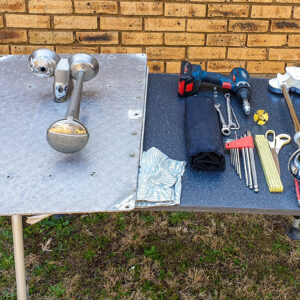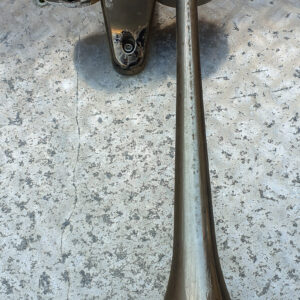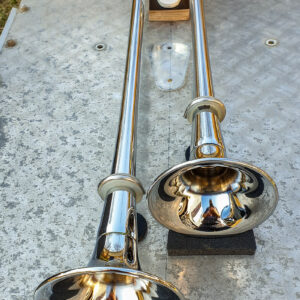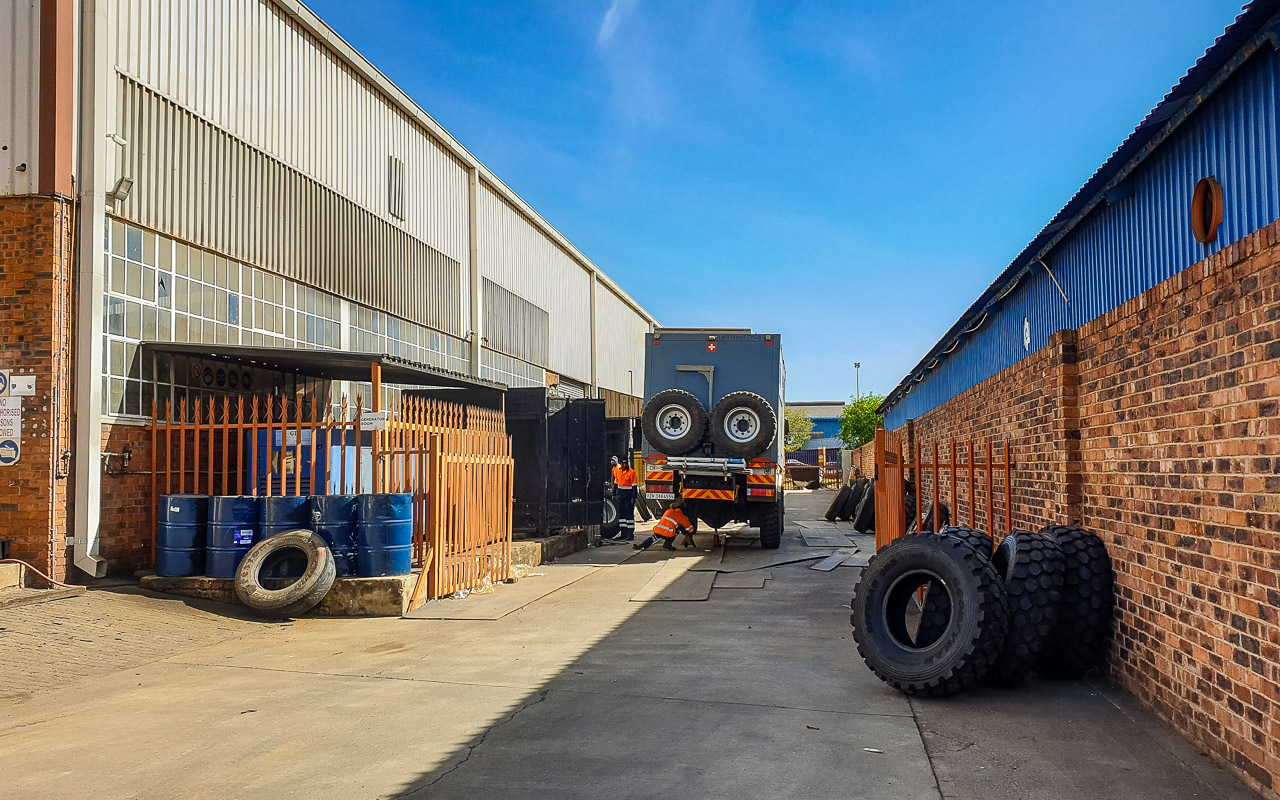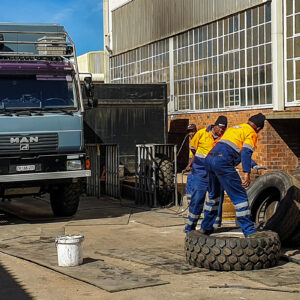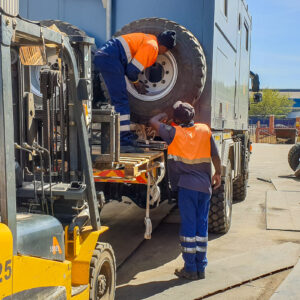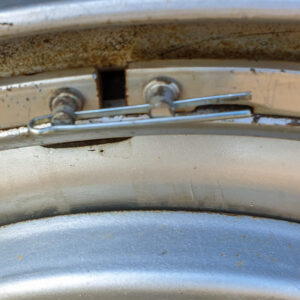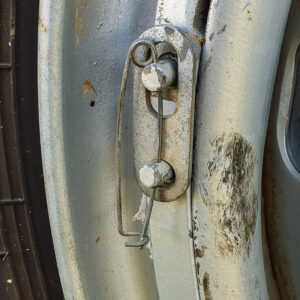A scary start
Without the predicted chaos, we check in at Zurich-Kloten Airport and have a smooth flight to South Africa. We even manage to get some sleep so that we arrive in Johannesburg reasonably fit. We find our MAN in perfect condition (from the outside). As the vehicle batteries were connected to a smart charger, it starts immediately and we can drive out of the shed where it has been stored for four and a half months.
At the so-called “campsite” – a corner of the meadow with an improvised open-air toilet and a non-functioning electrical connection – we discover the big problem.
The big scare
Our electrical system is dead. Our 6 lithium batteries are discharged to 0.5 to 2.0 volts. This means that the person responsible, Weisse, did not monitor our batteries and did not charge them every two weeks. We then try to charge the batteries with our truck charger, but without success, as the batteries have electronically discharged. We improvise, pull a power cable into the vehicle so that we can at least charge our smartphones and cook soup with the induction stove. The luggage we’ve brought with us with all kinds of spare equipment gets in the way everywhere and we have a real mess in the vehicle at the beginning. But – it works.
Escalation
Eventually the situation escalates. The South African ends up standing in our vehicle with a giant old-style charger and wants to charge our batteries. It prevents us from doing our work and becomes very confused. We mustn’t make another sound or he’ll roar. “I was another one of those supervisors who had no idea about anything and treated his staff as he pleased…” and I have to endure many other insults. The fact that we have no electricity is the council’s fault (and not its bumbling, dilapidated installation) etc.
We come to the realization that we will never reach a smart goal this way and literally flee this terrible place the next day. The nearby backpackers lodge “Backpacker Connection” is happy to accommodate us. Here we can live in the car, the shore power works 24 hours a day and the toilets and showers are clean and the shower water is hot. Here we can relax, still live improvised lives, but we can finally think about solving our problem. As it’s the weekend anyway, we unpack our luggage and decorate the interior of our vehicle with some pictures we’ve brought with us.
State of mind
The whole situation is taking its toll on our thoughts and nerves. It is clear to us: “
If we can no longer charge the batteries, then we have to ship home
“. Even in South Africa, such batteries are not available (we asked) and buying a new one is extremely expensive – not to mention the transportation from Europe to South Africa.
But despite the difficulties, we are not giving up and are trying to solve the problem step by step. After all, we can live improvised in the vehicle, so we are virtually at home!
The electrical professional in Germany
We contact Ralf Weiss, motor vehicle electrician in Bad Saulgau, via Whatsapp. He knows the electrical system of our vehicle, as well as the installed components. He instructs us to buy an adjustable laboratory power supply with an output of 5-10 amps and a range of 10 to 30 volts and to use this device to wake up each of the batteries from a deep sleep. Good advice is expensive, because who knows where to find an electronics store in the Johannesburg area? The majority of South Africans are very practical, they can repair cars, know how to make fire, can fish and hunt game and much more. But electronics? We decide to drive to MAN in Pretoria to have the service carried out there, which is due anyway, and hope that there is an electrician there who can help us.
Finally, we are always in contact with Ralf Weiss and he guides us step by step through the entire process – and all the way to success. We can only thank Ralf Weiss from the bottom of our hearts for his help.
Hatfield MAN in Pretoria
We have had another positive MAN workshop experience. Hatfield MAN in Pretoria took excellent care of our vehicle. This “TÜV-Rheinland” certified truck workshop carried out all the work professionally. At our special request, the brake system is also checked – fortunately! This is because one of the brake cylinders is leaking and the engine or continuous brake no longer works. So we get a new permanent brake (we had a spare part with us) and a new brake cylinder, which is delivered overnight from Johannesburg. We are allowed to spend the night on the site and are allocated a shore power connection and a toilet/shower (we are still living improvised lives).
Yes, and our plan worked out: Gustav, the workshop manager, names several specialist stores not far from Hatfield where we can get the laboratory power supply we need . We then drive back to the backpacker lodge in Johannesburg.
Our lithium batteries can be recharged
Equipped with the adjustable laboratory power supply unit, we immediately get to work. I’ll start with the battery, which only has 0.5 volts left. As this process is not entirely safe, I sit next to it the whole time and monitor the batteries.
For the first battery, I need more than 5 hours charging time until it has a voltage of 11 volts. Battery no. 2 takes about 3 hours, then 2 hours and finally only a short time until all the batteries have reached about 10 to 11 volts. I can hear it when the battery electronics switch on again and start to allow charging.
All batteries are now at around 9 to 11 volts. In the next step, I charge the batteries where they are joined together with our intelligent Ctech 24V charger until all the batteries have an even charge of 12V. Only now do I switch our electronics back on – and oh joy – everything works as before. The 480 ampere-hours are now being stored again via shore power, which I continue to monitor. The batteries also behave inconspicuously over the next few days – as before, completely normal. We are grateful that we now have reliable electricity again and can generate it from our solar panels.
Overland horn
One of the tubes of our overland horn broke off in Namibia. Cheap plastic product. We set up our outdoor workshop. Encouraged by the successful work on the batteries, we remove the old horn and fit the new one. A whole day’s work, as it has to be removed and refitted on the vehicle roof. Now we can make ourselves heard again in heavy traffic if we have to, or greet other truck drivers with the horn.
New tires
Finally, we have our new tires, which we bought a year ago, fitted. However, the employees are rough around the edges. They slam our rims onto the concrete and – unfortunately, they realize too late – they have forgotten a safety plate and a safety pin on one of the snap ring rims. The vehicle is also inadequately secured, which is always a tingly feeling.
However, we are very satisfied with the tires. They are significantly softer than our old Continental and don’t need to be inflated as much according to the manufacturer’s air pressure list. So far, we are very happy with them, even though we don’t know anyone who drives these tires (GoodYear Offroad ORD 365/856 R20, an army tire).
